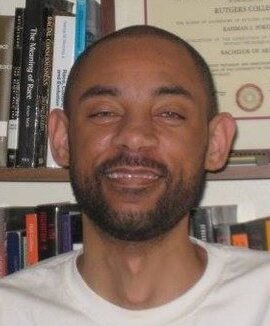WWE Superstars Use Stem Cells to Smackdown Pain
/By A. Rahman Ford, PNN Columnist
As a child, I was a big fan of professional wrestling. While I don’t follow it as religiously as I used to, I have noticed a rather interesting trend. Several former wrestlers are opting for stem cell therapy to heal painful injuries. And some travel to foreign countries to get stem cell treatments they can’t get in the U.S.
Many people consider professional wrestling a fake sport, but to wrestlers their injuries are very real. Bleacher Report’s Ryan Dilbert has reported on the toll wrestling can take on the body. He recalled how Diamond Dallas Page was “power bombed” by Kevin Nash, rupturing two vertebrae in his back. Page was injured so badly he couldn’t finish the match.
"I was in excruciating pain," Page said. "I was on my back, and I crawled to the corner. I didn't go back in the ring."
Three-time World Wrestling Entertainment (WWE) women’s champion Beth Phoenix once finished a match with a broken jaw.
"Fans may see us once or twice a year," said Phoenix, who is now retired. "They don't realize that we go on these grueling tours. We're on the road 300 days a year. There's no recovery time. It's a test of your physical and mental endurance."
A 2014 study in the journal PLOS One found that professional wrestlers had “an alarmingly high premature mortality rate.” Wrestlers were 4.5 times more likely to die than the general population. The authors cited chronic pain and drug addiction as likely culprits.
“It is reasonable to assume chronic musculoskeletal injuries resulting in abuse of pain-relieving prescription drugs play a role in the premature drug-related deaths and possibly suicide among some wrestlers. It is also plausible that the painful injuries are self-treated with high doses of non-steroidal anti-inflammatory drugs (NSAIDs),” they said.
Consider what happened to these three professional wrestlers:
Former Olympic gold medalist Kurt Angle became addicted to painkillers after he fractured his back. At his worst, Angle was taking 65 extra-strength Vicodin a day.
Former WWE Superstar Lance Cade became addicted to hydrocodone after suffering a shoulder injury. He died six months after completing a drug rehab program, with hydrocodone found in his system at the autopsy.
Former WWE Superstar Ashley Massaro committed suicide in May of this year. The 39-year old suffered from migraines and bouts of depression, which she maintained were a result of wrestling injuries.
“WWE used narcotics as a tool to allow me and other wrestlers to perform through our injuries. If we took enough pills the pain went away (temporarily) and we were able to wrestle. Obviously, this worsened our injuries and required us to take more pain medication the next time,” Massaro said in an affidavit for a recently-dismissed federal lawsuit.
‘Substantial Benefit’ From Stem Cells
Some professional wrestlers are turning to stem cell therapy as an alternative to pain relievers. WWE Superstar Ronda Rousey received stem cells to treat an ACL injury to her knee. In a documentary, Rousey said the damage to her knee was so severe that for several years she could not even comfortably step backwards. Rousey says stem cell therapy “really helped a lot.”
IMPACT Wrestling World Champion Brian Cage recently traveled to Colombia for stem cell treatment for a back injury.
“The injury was awful. One of the most painful moments of my career. I literally thought my career might be over,” Page told the Lords of Pain. “I was doing everything under the sun to try and recover from that, including going to Columbia and getting the stem cells, and I do believe it did have a substantial benefit to it.”
Wrestlers Melissa Santos, Rey Mysterio, Ryback and Angle also made the trip to Colombia for stem cell treatments. Ryback says he is now 100% healed. And Angle recently told fans on Facebook that he’s doing better.
“My shoulders feel great. My neck and back are struggling a bit but I’m optimistic about them getting better just like my shoulders. It usually takes 3-6 months to feel improvement. It’s been 2 months,” Angle said.
A. Rahman Ford, PhD, is a lawyer and research professional. He is a graduate of Rutgers University and the Howard University School of Law, where he served as Editor-in-Chief of the Howard Law Journal.
Rahman lives with chronic inflammation in his digestive tract and is unable to eat solid food. He has received stem cell treatment in China.
This column is not intended as medical advice and represent the author’s opinions alone. It does not inherently express or reflect the views, opinions and/or positions of Pain News Network.





